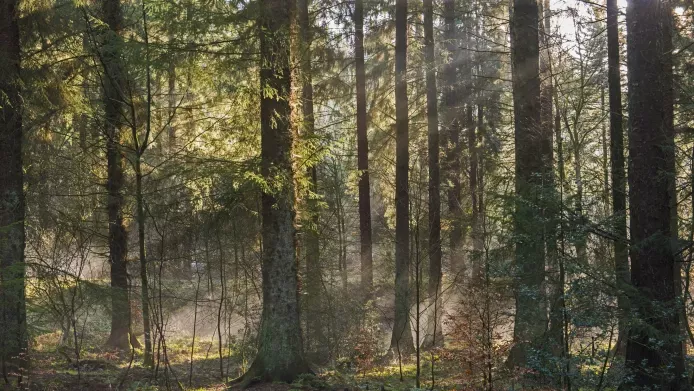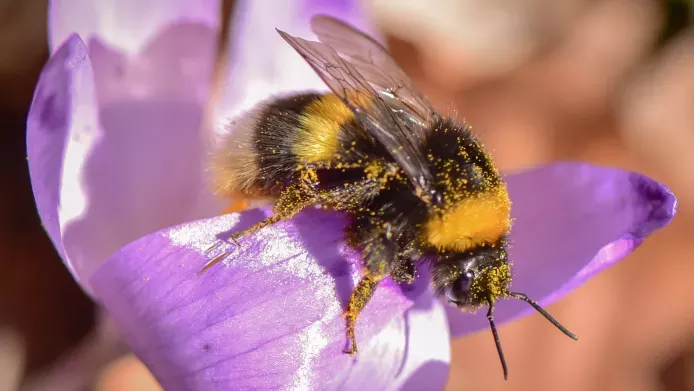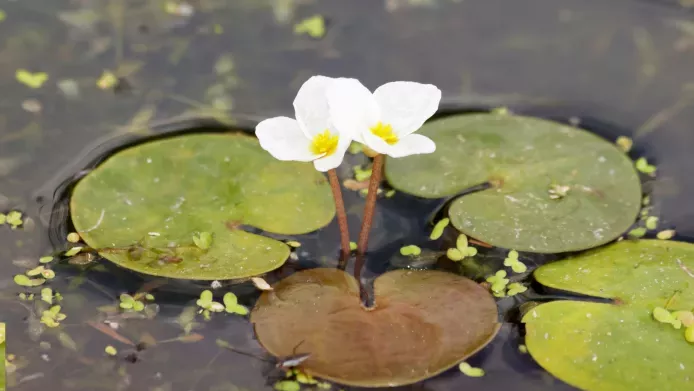This British Science Week we’re sharing 10 projects you can get involved with, supporting scientific discoveries in UK biodiversity.
Join a network of thousands of citizen scientists from the comfort of your own garden or on your way to work, and learn new wonderful things about wildlife.
What is citizen science?
Citizen science projects bring together scientists and public volunteers, to collect data. These projects are invaluable in conservation, making it possible to collect information that scientists alone would be unable to access.
As well as helping advance research projects, becoming a citizen scientist is an amazing way to learn about plants and wildlife.
10 projects to get involved with citizen science
1. Nature’s Calendar

Does climate change affect timings in nature? What effect has recent weather had on wildlife? The Woodland Trust’s citizen science project, Nature’s Calendar, is all about tracking the effects of weather and climate change on wildlife.
By joining Nature’s Calendar, you can contribute to a biological record dating back to 1736.
When? All year round.
How? Choose locations that you visit regularly where you can monitor one or more of your chosen species. Perhaps it’s a hawthorn tree that you walk past on your way to work, or the birds in your garden.
2. National Plant Monitoring Scheme (NPMS)

While the popularity of citizen science projects is growing, plants have been left behind. The NPMS aims to survey abundance and diversity of plant species, the foundation of all our ecosystems, across different habitats in the UK. This helps us to understand the health of these habitats.
When? All year round.
How? You will be randomly allocated a 1km square to visit near where you live, where you can record plant ‘indicator species’ in small plots.
3. Why do sheep eat ivy?

What remains of Britain and Ireland's veterinary traditions? Knowledge of how plants and fungi were (or are) used to treat animal illness in Britain and Ireland is disappearing. Dr William Milliken is researching how recovering traditional knowledge could help animal health and the wider environment.
When? All year round.
How? Contribute your knowledge on the use of plants to treat animals.
Support Kew by registering plants you've used to treat animals
4. Nature Overheard

Ever wondered how a noisy road might affect the way insects communicate? The Natural History Museum is collecting data to better understand this through the Nature Overheard survey.
When? Spring through to Autumn. Best time of day: between 10am – 4pm
How? Pick an area beside a road and record audio for 5 minutes. Then write down any insects that you observe.
5. Flower-Insect Timed Counts

Flower-Insect Timed Counts (FITs) take ten minutes and can be done anywhere, including gardens and parks. It is a simple survey part of The UK Pollinator Monitoring Scheme (PoMS) that collects data on the total number of insects that visit a particular flower.
When? 1 April to 30 September each year.
How? Spend ten minutes watching flowers and insects in good in warm, dry weather during daylight hours!
6. The Big Butterfly Count

Run by Butterfly Conservation, The Big Butterfly Count asks people across the UK to count the amount and type of butterflies (and some day-flying moths) they see, to help assess the health of our environment.
When? July- August.
How? Download Butterfly Conservation’s free identification guide and choose a place to spot butterflies and moths. Watch for 15 minutes and record which species you see.
8. Big Garden Bird Watch

Take the opportunity to learn to recognise more UK bird species by joining in with the RSPB’s Big Garden Bird Watch. 185 million birds have been counted in total since 1979!
When? Three days in January each year.
How? Relax in your own garden and count how many birds visit you.
Find out about the Big Garden Bird Watch
9. PondNet Spawn Survey

The Freshwater Habitats Trust is on a mission to map amphibian breeding activity across the UK. It’s easy to take part in the PondNet Spawn Survey and help them!
When? December to May.
How? Log your sightings of Common Frog and Common Toad spawn to help us learn more about amphibian breeding activity across the UK.
10. Shoresearch

A chance to learn about the wildlife of our valuable intertidal shore habitats and explore your local coast.
Our sea life is fragile, and you could help scientists better understand the effects of pollution, climate change and invasive alien species.
When? All year round.
How? Get trained to identify and record the wildlife on shores across the UK. Contact your local Wildlife Trust to get involved.
Noticing Nature at Wakehurst
You can take part in a new wellbeing study at Wakehurst, as part of Nature Unlocked, to help research which habitats provide the most benefits to us and our planet.
 Wakehurst in Spring. © RGB Kew.
Wakehurst in Spring. © RGB Kew.
Other ways to get involved with nature




